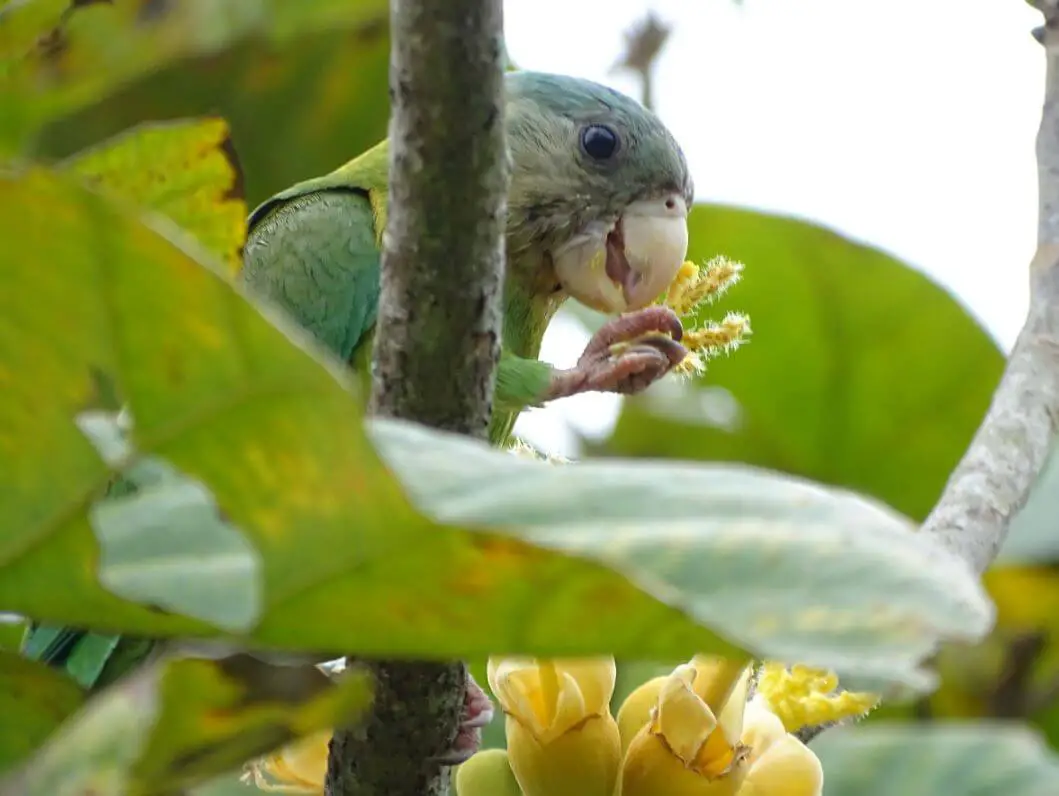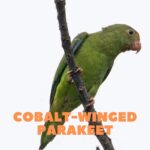
Identification
Gray-cheeked Parakeet 20 cm; 60–68 g. Crown bluish-green, cheeks pale grey; body and wings green, lighter below; underwing coverts orange-red. Immatures have green crowns.
Systematics History
DNA study indicates that this species and B. jugularis are sister taxa which, in turn, are sister to the pair B. cyanoptera and B. chrysoptera. Monotypic.
Subspecies
Monotypic.
SOURCE: dalegkalina
Distribution
SW Ecuador (Manabi, Los Ríos, Santa Elena and Guayas to Loja) and extreme NW Peru (Tumbes and N Piura).
Habitat
Evergreen and disturbed humid forest, deciduous Ceiba trichistandra forest and woodland (birds seemingly most numerous in this habitat),
Movement
The scarcity of the species in certain apparently suitable areas may reflect seasonal displacements, which are thought likely to occur.
Diet and Foraging
Petals and seeds of Erythrina trees, flowers and seeds of Chorisa, flowers of Cavanillesia platanifolia, the fruit of Ceiba and Ficus, and catkins of Cecropia.

Sounds and Vocal Behavior
Common calls include a shrill “chree” or bisyllabic “chree-chree”, given both in flight and perched. Also a fast chattering series “cra-cra-cra-cra-cra”.
Noisy in flight, individuals of a group often call simultaneously. Large groups can make a loud cacophonous noise.
Grey cheeked parakeet morning scratches
SOURCE: MikeLaJolla
Breeding
Most activity probably coincides with the wet season, Jan–Mar, although specimens from Jul had slightly enlarged gonads, and copulation was witnessed in Aug.
Large trees with hollow limbs are apparently needed for nest holes; termite mounds are also used. In captivity: 4–7 eggs; young fledge at six weeks.
Petey the grey-cheeked parakeet running around on the island.
https://www.youtube.com/watch?v=pAtjKMa3AIo
SOURCE: timmato57
Conservation Status
ENDANGERED. CITES II. Previously considered Near Threatened. Formerly abundant, now only locally common. Present in four protected areas:
Cerro Blanco Reserve, Arenillas Military Reserve and Manglares-Churute Ecological Reserve in Ecuador, and Tumbes National Forest in Peru.
Large-scale conversion of forest to agriculture has caused a substantial reduction of presence within the historical range, this being compounded by substantial chronic exploitation for trade (both local and international) and, possibly, depletion of suitable natural nest sites.
A total of 59,320 birds, almost entirely from Peru (but very possibly originating in Ecuador) reported as having been imported by CITES countries, 1983–1988, representing absolute minimum, and only international trade;
moreover, most birds are captured as nestlings and the mortality rate is not known. The world population of wild birds is now judged as only 15,000; both range states now have bans on international trade.




















